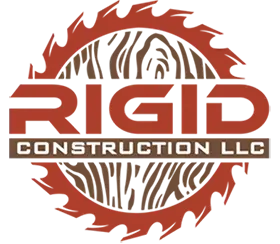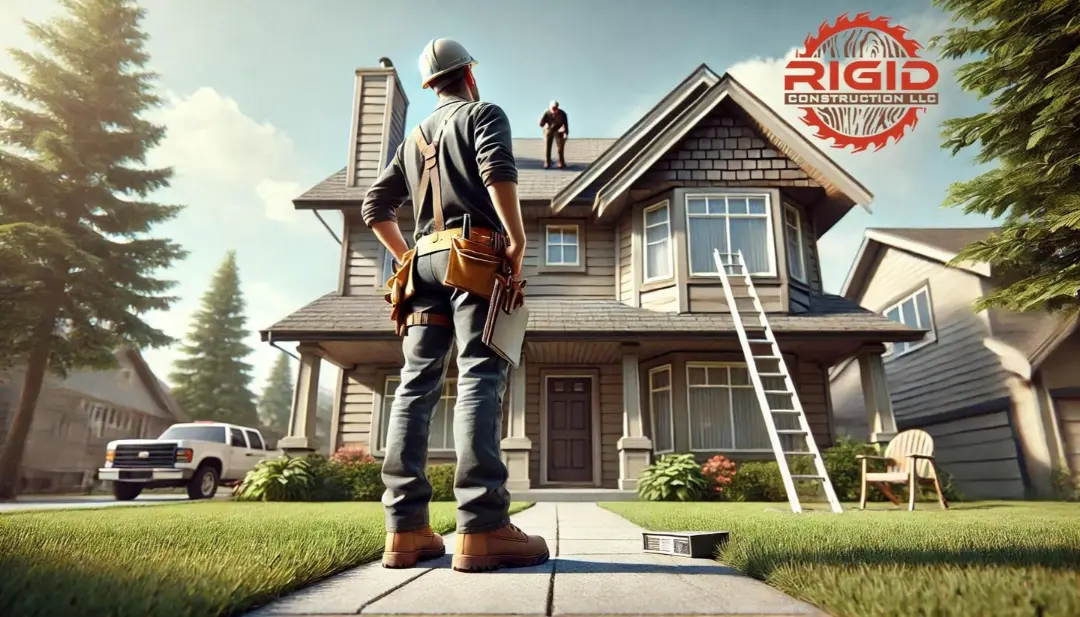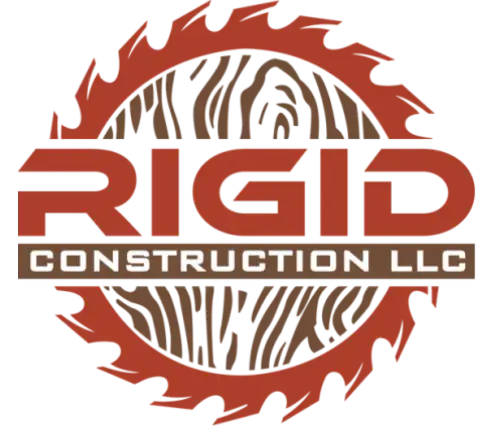Getting a new roof for your home is a big project. You want it done well, and knowing the roof replacement process from start to finish can really help you with that. There’s more to it than just nailing on shingles. Picking materials, finding good contractors, understanding costs… You’ve got a lot of choices to make.
Here, you’ll get a handle on everything that’s part of a roof replacement process. This will make you a smarter homeowner so that your roofing project goes smoothly, from tear-off to the final inspection.
Why Choose Rigid Roofing & Construction for Your Roof Replacement?
At Rigid Roofing, we pride ourselves on providing exceptional service and expertise throughout the entire roof replacement process. From the initial consultation to the final inspection, our team is dedicated to ensuring your complete satisfaction and peace of mind. If you have any questions or are ready to start your roof replacement journey, don’t hesitate to contact us today.
What Is Involved in the Roof Replacement Process?
It helps to break things down into simple steps. When you see how a roofing project flows, it makes things way less scary. Knowing what questions to ask also makes sure you’re in control of your investment and sets you up for a better outcome.
Remember, you want things done by the book – the right materials, licensed workers, and absolutely, permits and cleanup. It’s a bit like a checklist, and following each item makes for a smoother, better roof replacement for you and your property.
Step 1: The Initial Assessment and Estimate
The very first step is reaching out to a roofing contractor to schedule an appointment. Reputable roofers, like us, always do a full evaluation and inspection before giving you a roofing estimate.
If the contractor you’ve hired is truly professional, they should explain what options exist and walk the roof themselves. Make sure you are clear about the color, materials, and whether this is a total tear-off or if the contractor believes a second layer of roofing materials can be applied.
Step 2: Choosing a Roofing Material and Getting the Contract
Choosing the right material isn’t just about aesthetics – each roofing material type has pros and cons you need to consider. It affects how much your roof replacement will cost, how durable it is, how easy it is to maintain, and the look of your home. This choice really matters and factors in not only cost and durability, but even insurance premiums and resale value. Get clear on these factors so you make a choice that serves you in the long term.
Common Roofing Materials for Your Roof Deck
Asphalt shingles are affordable and easy to find. We find homeowners love them for how adaptable and quick the installation is.
- Asphalt shingle roof: A good middle-of-the-road choice balancing budget, longevity, and decent curb appeal.
- Wood shakes: Great for certain aesthetics, these have a natural charm but aren’t ideal if there are fire concerns where you live.
- Metal Roofing: Known for long-lasting, fire-resistant, good if you live in a fire prone area. A big plus in Charleston where hail storms and strong winds are common. Be prepared to pay more upfront, though. They require expertise, so always seek licensed and specialized metal roofing contractors.
- Slate: An upgrade to your curb appeal, very durable and can withstand severe weather, they’re a great choice, however they’re a huge investment, can be slippery and often require a team that’s trained specifically in slate. This may increase your project timelines if it’s a complicated roof or a crew isn’t available right away.
- Tile roofs: You’ve probably seen these giving homes a Spanish vibe. But there are also newer composite tiles that weigh less than the typical heavy clay tiles, and there are also fire-resistant benefits similar to those of tile.
Getting it All in Writing
Get a written contract. Make sure that everything – pricing, dates, cleanup, tear-off vs re-roof, even the brand and style of shingle are documented.
Step 3: Understanding Insurance Considerations
Roofing projects can get pricier than people expect, especially when the roof deck itself is involved. The average price of a full replacement falls between $5,848 and $12,879, according to data from Angi. In many cases though, your insurance might kick in – think hail damage or fallen branches. It’s a great idea to review your homeowner’s policy to know how deductibles and coverage play into your situation.
You want a thorough estimate upfront to compare to what insurance provides so there are no surprises. Many folks find a discount for “fortified roofs”, so asking about that will likely save you some money on your annual premium.
Step 4: Scheduling, Permits, and What To Expect From a Roof Installation
Before you start tearing anything off your house though, don’t forget to check for building permits in your area. You’ll need this. Be sure the contractor gets these. That said, be prepared for the process… it’s messy. Noise, safety equipment all around your house – the roof replacement process just involves those elements, unfortunately.
The Roofing Project Tear-Off
This whole ordeal involves a few days (sometimes longer) of pretty significant mess and disruption around your home. Reputable contractors take good care to protect your yard, often using things like wooden boards around flower beds and gardens to shield them from impact.
Dumpsters to get rid of debris and leftover material usually take up a section of your driveway, although good contractors schedule these the day they start removing the shingles from the roof, then removal often occurs once the project is complete.
Step 5: Understanding Warranties and Cleanup Expectations
Make sure to ask the contractor for a detailed explanation of how long a warranty lasts and if anything could potentially void it – you might be surprised. Inadequate attic ventilation or high pressure washing after the fact… it’s all in the fine print and is crucial that you understand the nuances.
Be clear about the extent of cleanup. I can’t stress this enough. The contract you signed should state who is responsible for hauling away debris and leftover materials once your roofing job is complete.
Make sure it states the final cleanup includes the entire yard (if necessary) being “swept” for roofing nails or loose debris by using a rolling magnet.
FAQs about Roof Replacement Process
FAQ 1: What are the steps of installing a new roof?
A new roof typically involves removing the existing roof, assessing the roof decking, putting on protective layers like an ice and water barrier or felt underlayment, then installing a drip edge around all the roof’s edges. Shingles are usually put down next, starting from the bottom moving upwards towards the peak of the roof. Flashing should then be installed anywhere a penetration, like a chimney or skylight exists. Vent and ridge cap shingles go last with cleanup usually right after to prevent damaging things like your A/C units from debris falling and poking holes into the coils.
FAQ 2: What are the stages of a new roof?
The steps of a roofing project are quite extensive but here’s how I simplify them when explaining to homeowners: Getting your estimate, signing the contract and doing final inspections on things like roofing shingle selection and whether to tear-off or re-roof over your current shingles, checking your insurance and securing proper permits, tear-off, repairs or replacing of your roof decking, underlayment application, roof shingle and flashing install, and cleanup are the steps involved, although some steps could occur in slightly different order depending on how a roofing crew schedules those components.
FAQ 3: Do you need a permit to replace a roof in South Carolina?
Generally speaking yes. Any major structural updates and modifications require a permit, especially since it will influence your insurance rates once your homeowner’s insurance company learns of the project. Make sure the roofer you’ve hired pulls permits.
FAQ 4: How messy is a roof replacement?
Think debris, dumpster rentals, old shingles, construction materials… yeah, it gets really messy, which is why the final cleanup stage of a roofing project is critical to ensuring the entire property looks the way it did prior to the project starting.
Conclusion
That’s roof replacement process in a nutshell. No, there’s a ton more to it. Every project will be a little bit different – roof size, weather delays, unexpected damage, those happen. Having this guide at your disposal is one step in making sure your roofing project gets off on the right foot. A big tip to take away: Find someone you feel confident in and has experience. Their skill will guide you through any situation so your roof replacement is successful.
Why Choose Rigid Roofing & Construction for Your Roof Replacement?
At Rigid Roofing, we pride ourselves on providing exceptional service and expertise throughout the entire roof replacement process. From the initial consultation to the final inspection, our team is dedicated to ensuring your complete satisfaction and peace of mind. If you have any questions or are ready to start your roof replacement journey, don’t hesitate to contact us today.



